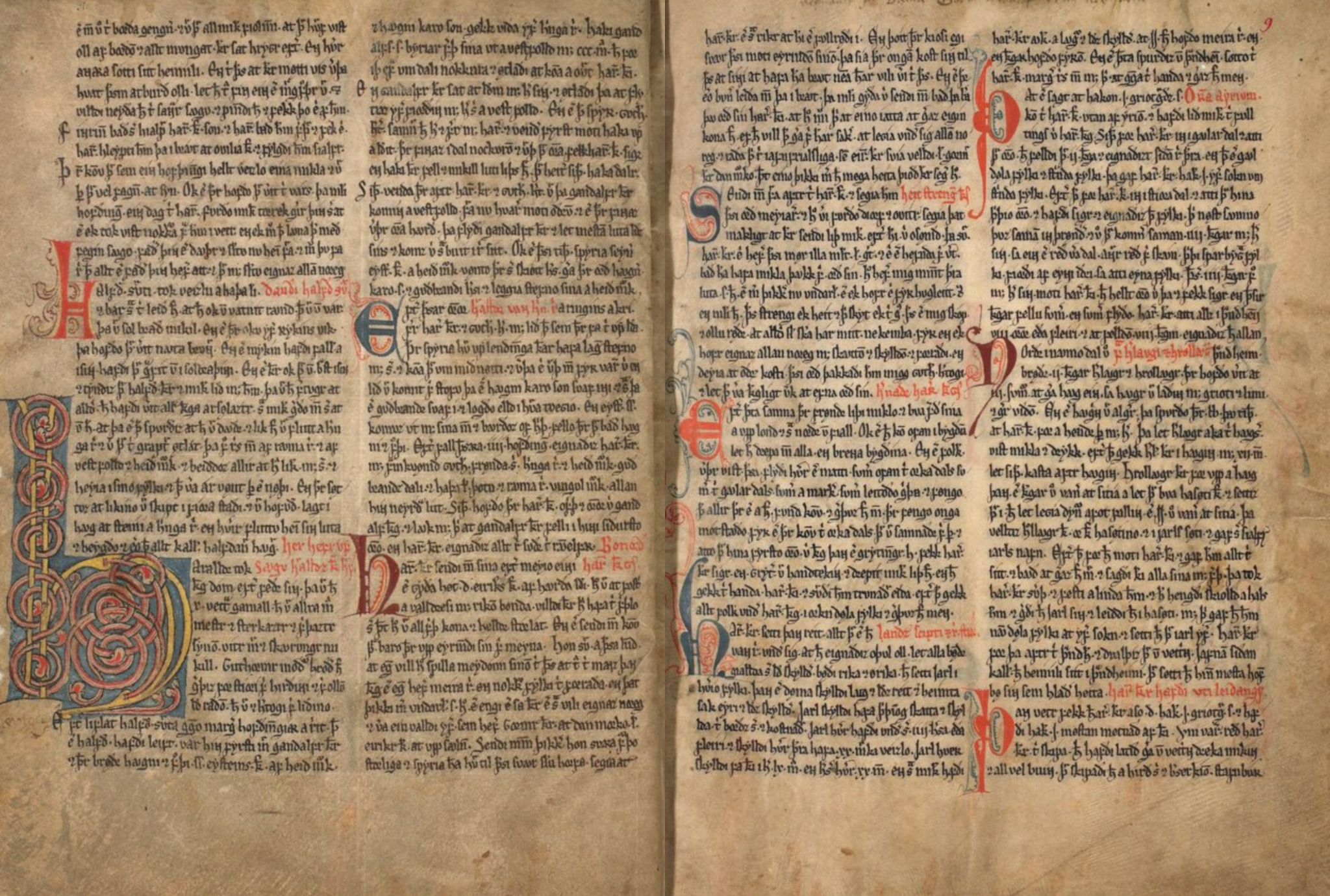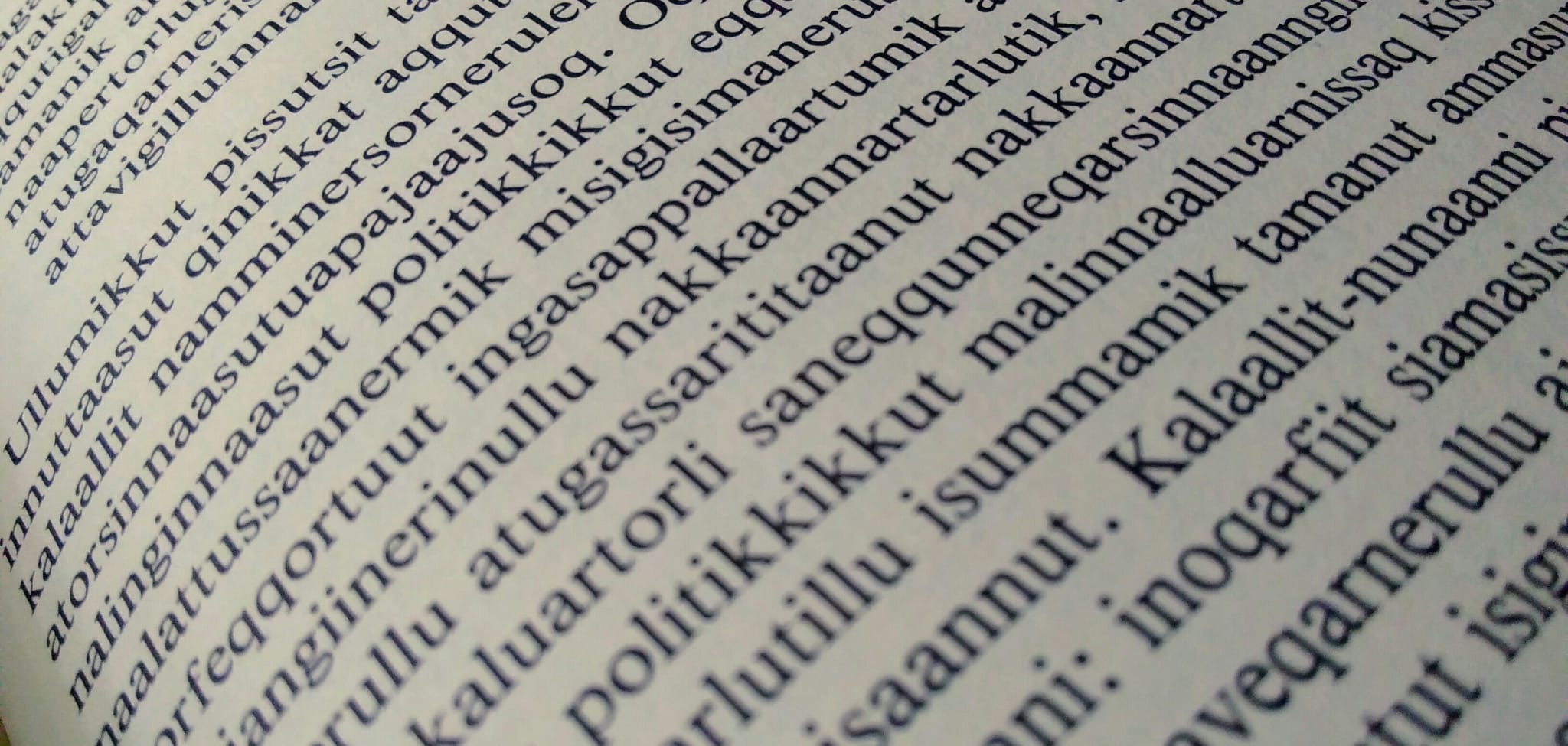Langgård, Karen: «Considerations about the impact of Danish on the morphology of Kalaallisut». More Morphologies. Contributions to the Festival of Languages, Bremen, 17 Sep to 7 Oct 2009, published by Hitomi Otsuka et. al, Universitätsverlag Dr. N. Brockenmeyer, 2012, 1–21.
The colonisation of Greenland by Denmark has left its mark on the Greenlandic language (Kalaallisut) and its use, not least because of the language contact between Danish and Kalaallisut. In this paper Karen Langgård successfully analyzes the impact of Danish on the morphology of Kalaallisut and demonstrates the different aspects in short chapters, which some of will be summarized in the following review. The history of this language contact starts in 1721 with the colonisation of Greenland by Denmark, when the Greenlanders used to speak Kalaallisut. This changed drastically after the official decolonisation in 1953, where Greenland became a part of Denmark. As Danish became more and more important Kalaallisut underwent a lot of changes. Home Rule which was established in 1979 and Self-Government in 2009 brought an end to the Danification period, but Danish remained an important language in Greenland.
Even though there has been an intense language contact since 1721 Danish has not had a big impact on word formation, derivation and inflection of Kalaallisut. Instead, lexical borrowings occured. The first loanwords were mainly from the church like Jiisusi (Jesus), palasi (priest) but also words like hiisti (horse). After 1953 Danish became a more commonly spoken language as there were more bilinguals. As a result, more loanwords found their place in Kalaallisut.
Today, (mostly) Danish words are adopted into Kalaallisut. Danish nouns are usually marked in Kalaallisut adding an –i, e.g. Danish rådhus > rådhusi. The same happens with verbs to which the usual ending –poq is added, e.g. Danish pause > pauserpoq (‘make a break’). Since there are no adjectives in Kalaallisut, they are either expressed through nouns or verbs. Words that have been adapted to Kalaallisut can be derivated as any other stem in Kalaallisut, e.g. out of gruppi (from Danish gruppe) a verb like grupperpoq (‘participate in group therapy’) can be made.
Danish is a language with many compounds while Kalaallisut doesn’t have any compounds. This is a challenge especially when there is not any derivational morpheme with whitch it would be possible to create a word with the same meaning. One possibility is a possessor-construction, although this solution is not very elegant. Ultimately, in most cases a Danish loanword is used.
Additionally, Langgård observes the Ergative-dropping. Kalaallisut has already been an ergative language long before colonisation; however, the paper suggests that the dropping of the ergative case is not due to an influence of Danish, but rather to a general shift from ergativity to nominal-accusative syntax based on contacts with accusative European languages. Furthermore, in Kalaallisut there are merely a future and a non-future tense, and only recently has a derivational morpheme {sima} been used that marks a past tense. This phenomenon is probably also due to the contact with different languages like Danish or English which both have a past tense.
Finally, the article mentions other Inuit languages which, although they have language contact with different languages (English vs. French vs. Danish), are still very alike in morphology and syntax and have not diverged.
In conclusion, the most loaning took place after 1953 and isn’t very important to morphology. However, since integrating neologisms is tricky and since a “puristic fear of loanwords” exists, speakers tend to switch to Danish when using language for specific purposes (LSP) rather than using Greenlandic. In LSP more complex sentences are used than in everyday life, which leads to speakers who aren’t as confident in Kalaallisut as in Danish when talking about specific subjects.

